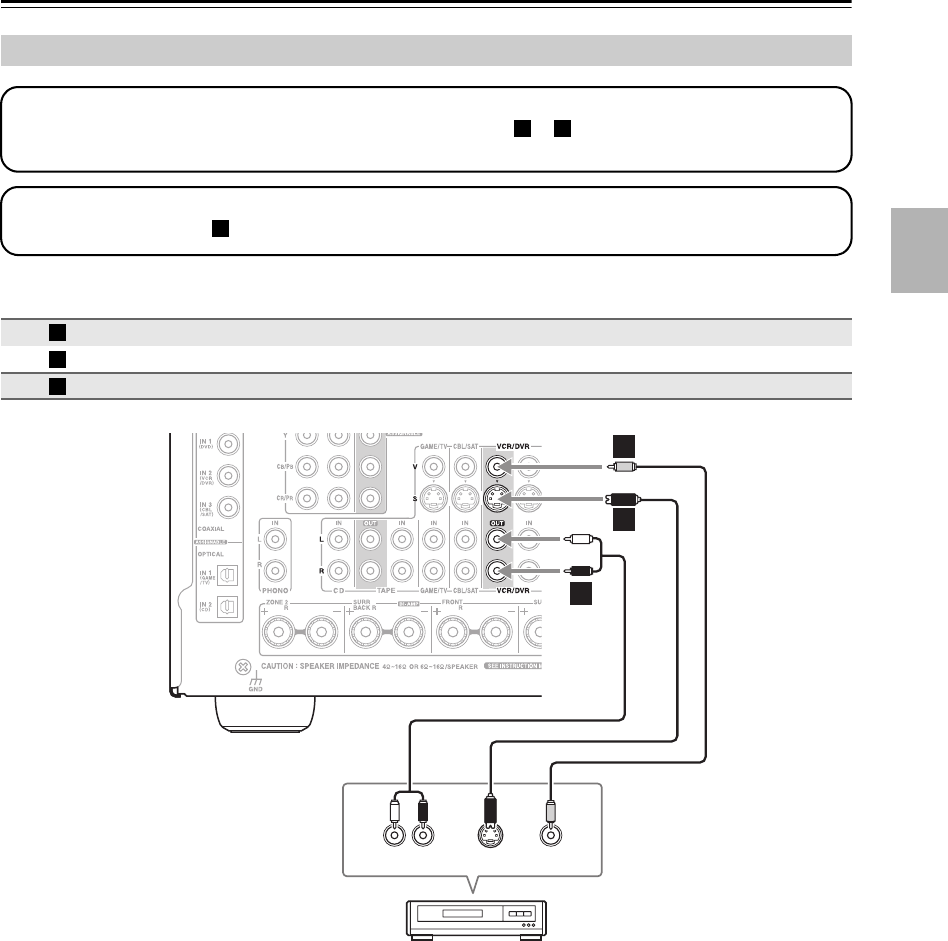
29
Connecting the AV Receiver/AV Amplifier—Continued
Notes:
• The AV receiver/AV amplifier must be turned on for recording. Recording is not possible while it’s in Standby mode.
• If you want to record directly from your TV or playback VCR to the recording VCR without going through the AV
receiver/AV amplifier, connect the TV/VCR’s audio and video outputs directly to the recording VCR’s audio and
video inputs. See the manuals supplied with your TV and VCR for details.
• Video signals connected to composite video inputs can only be recorded via composite video outputs. If your
TV/VCR is connected to a composite video input, the recording VCR must be connected to a composite video output.
Similarly, video signals connected to S-Video inputs can only be recorded via S-Video outputs. If your TV/VCR is
connected to an S-Video input, the recording VCR must be connected to an S-Video output.
Connecting a VCR or DVD Recorder for Recording
Connection AV receiver/AV amplifier Signal flow VCR or DVD recorder
VCR/DVR OUT S
⇒
S-Video input
VCR/DVR OUT V
⇒
Composite video input
VCR/DVR OUT L/R
⇒
Analog audio L/R input
Step 1: Video Connection
Choose a video connection that matches your VCR or DVD recorder ( or ), and then make the connection. The
video source to be recorded must be connected to the AV receiver/AV amplifier via the same type of connection.
A B
Step 2: Audio Connection
Make the audio connection .
a
A
B
a
S VIDEO
IN
AUDIO
IN
VIDEO
IN
LR
B
C
A
a
B
VCR,
DVD recorder


















